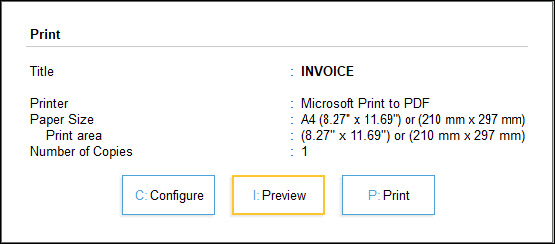In today’s digital age, the humble a4 paper size remains a staple in offices, schools, and homes around the world. From printing important documents to creating artistic masterpieces, A4 paper plays a crucial role in our daily lives. In this comprehensive guide, we will delve into the history, applications, benefits, and future trends of the A4 paper size. So, grab your favorite pen and get ready to explore the fascinating world of A4 paper!
Understanding the A4 Paper Standard

The History and Evolution of A4
The A4 paper size has a rich history that dates back to the early 20th century. German engineer Dr. Walter Porstmann is credited with developing the DIN 476 standard in 1922, which laid the foundation for the A-series paper sizes. The A0 size was defined as 1 square meter, and subsequent sizes were created by halving the preceding size along the longer side.
| A-Series Size | Dimensions (mm) | Dimensions (in) |
|---|---|---|
| A0 | 841 × 1189 | 33.1 × 46.8 |
| A1 | 594 × 841 | 23.4 × 33.1 |
| A2 | 420 × 594 | 16.5 × 23.4 |
| A3 | 297 × 420 | 11.7 × 16.5 |
| A4 | 210 × 297 | 8.27 × 11.69 |
In 1975, the International Organization for Standardization (ISO) adopted the DIN 476 standard as ISO 216, making the A4 paper size an internationally recognized standard.
Benefits and Applications of A4 Paper
The A4 paper size offers numerous advantages that contribute to its widespread popularity. Its compact dimensions of 210 mm × 297 mm make it easy to handle and store, while its standardized format ensures compatibility across different devices and printing systems.
Here are some common applications of A4 paper size:
- Everyday Printing: A4 is the go-to choice for printing documents, letters, worksheets, and presentations due to its versatile size and readability.
- Business Documents: From reports and memos to invoices and contracts, A4 paper is widely used in offices for professional correspondence and record-keeping.
- Educational Materials: Teachers and students rely on A4 paper for printing assignments, handouts, study guides, and academic projects.
The flexibility and convenience of A4 paper make it an essential tool for both personal and professional use.
A4 vs. Other Paper Sizes: A Comparison

A4 vs. Letter Size
One of the most common comparisons is between the A4 and Letter paper sizes used in different parts of the world. While A4 measures 210 mm × 297 mm (8.27 in × 11.69 in), the Letter size is slightly narrower at 216 mm × 279 mm (8.5 in × 11 in). This small difference can lead to issues when printing documents designed for one size on the other.
Here are some key differences between A4 and Letter size paper:
- Standardization: A4 is the international standard, while Letter size is primarily used in North America.
- Compatibility: A4 documents may need to be resized or adjusted when printed on Letter size paper, and vice versa.
- Aspect Ratio: A4 has an aspect ratio of approximately 1:√2 (1:1.414), while Letter size has a slightly different aspect ratio.
Despite these differences, both A4 and Letter size papers serve similar purposes and are widely accepted in their respective regions.
A4 vs. Legal Size
In addition to Letter size, another common paper size is Legal size, which measures 216 mm × 356 mm (8.5 in × 14 in). Legal size paper is typically used for legal documents, contracts, and official forms that require extra space for signatures and notations.
Here are some distinctions between A4 and Legal size paper:
- Length: Legal size paper is longer than both A4 and Letter size paper, providing more room for content.
- Usage: Legal size is preferred for documents that need to accommodate additional information or signatures, such as contracts and agreements.
- Accessibility: A4 is more widely available and used globally, whereas Legal size is primarily utilized in countries that follow the U.S. paper standards.
Depending on the specific requirements of a document, choosing between A4 and Legal size paper can impact its layout and presentation.
Tips for Optimizing A4 Paper Usage

When working with A4 paper, there are several strategies you can employ to maximize efficiency and minimize waste. Here are some tips for optimizing A4 paper usage:
- Duplex Printing: Take advantage of duplex (double-sided) printing to save paper and reduce printing costs. Many printers offer automatic duplexing options for A4 paper.
- Print Multiple Pages Per Sheet: When printing drafts or internal documents, consider using the “Multiple Pages Per Sheet” feature to condense content onto fewer pages.
- Use Recycled Paper: Opt for environmentally friendly recycled A4 paper to lessen the ecological impact of your printing activities and promote sustainability.
By implementing these tips, you can enhance your A4 paper usage practices and contribute to a more eco-friendly approach to printing.
Environmental Impact of A4 Paper Production
The production of A4 paper, like all paper manufacturing processes, has environmental implications related to resource consumption, energy usage, and waste generation. However, advancements in sustainable forestry practices, recycling initiatives, and eco-friendly production technologies have helped mitigate the environmental impact of A4 paper production.
Here are some key factors to consider regarding the environmental impact of A4 paper production:
- Sustainable Sourcing: Look for A4 paper products certified by recognized forest management organizations, such as the Forest Stewardship Council (FSC), to ensure that the paper comes from responsibly managed forests.
- Recycling Programs: Support paper recycling programs in your community to divert used A4 paper from landfills and promote the circular economy.
- Energy-Efficient Manufacturing: Choose A4 paper manufacturers that prioritize energy efficiency, waste reduction, and emissions control to minimize their carbon footprint.
By raising awareness of environmental issues and making informed choices about the A4 paper products we use, we can contribute to a more sustainable paper industry and protect our planet’s precious resources.
Future Trends in A4 Paper Technology
As technology continues to evolve, so does the role of A4 paper in our increasingly digital world. Emerging trends in A4 paper technology are reshaping how we interact with traditional paper documents and opening up new possibilities for innovation and creativity.
Here are some future trends to watch for in A4 paper technology:
- Smart Paper: Developments in printable electronics and smart materials are paving the way for interactive A4 paper that can display dynamic content, respond to touch, and even connect to digital devices.
- Eco-Friendly Inks: The rise of eco-friendly, soy-based, and vegetable-based inks is reducing the environmental impact of printing on A4 paper and offering vibrant color options for sustainable printing.
- Digital Integration: Hybrid solutions that blend physical A4 paper with digital platforms, such as augmented reality (AR) apps and cloud storage services, are enhancing the functionality and utility of traditional paper documents.
By embracing these technological advancements and adapting to the changing landscape of A4 paper usage, we can harness the full potential of this timeless medium in a modern context.
Innovative Uses of A4 Paper beyond Printing
While A4 paper is primarily associated with printing and writing, its versatility extends far beyond traditional uses. Creative individuals and artists have explored innovative ways to leverage A4 paper as a medium for expression, experimentation, and artistic creation.
Here are some unconventional uses of A4 paper that showcase its adaptability and versatility:
- Origami Art: A4 paper is a popular choice for origami enthusiasts due to its ideal size, thickness, and foldability for creating intricate paper sculptures and designs.
- Mixed Media Collages: Artists combine A4 paper with various materials, such as paint, fabric, and found objects, to craft visually striking collages that blend textures and colors.
- Architectural Models: Designers and architects use A4 paper to build scale models, prototypes, and intricate structures that showcase spatial concepts and design ideas.
By thinking outside the box and experimenting with unconventional uses of A4 paper, individuals can unlock new avenues for creativity and self-expression.
A4 Paper: An Indispensable Tool for Business, Education, and Creativity
In conclusion, the A4 paper size stands as an indispensable tool that bridges the gap between analog and digital communication, creativity, and productivity. Whether used for printing essential documents, sketching innovative designs, or crafting intricate artworks, A4 paper continues to play a vital role in our daily lives.
From its humble origins in 1922 to its global standardization in 1975, the A4 paper size has withstood the test of time and remained a constant companion in offices, classrooms, and studios worldwide. By understanding its history, applications, benefits, and future trends, we can fully appreciate the significance of A4 paper in shaping our past, present, and future.
So, the next time you pick up a sheet of A4 paper, take a moment to reflect on its journey from a simple standardization effort to a symbol of creativity, communication, and connection across borders and generations. Embrace the possibilities that A4 paper offers and unleash your imagination on this blank canvas of endless potential.Conclusion
In this comprehensive guide to A4 paper, we have delved into the understanding, history, benefits, comparisons, optimization tips, environmental impact, future trends, innovative uses, and overall significance of this ubiquitous paper size. From its origins in the early 20th century to its modern-day applications in business, education, and creativity, A4 paper has maintained its relevance and versatility across various domains.
By exploring the evolution of A4 paper standards, we gain insights into the meticulous process of standardization that has shaped the way we interact with paper documents on a daily basis. Understanding the benefits and applications of A4 paper allows us to appreciate its efficiency, compatibility, and adaptability in different contexts, whether for printing official reports, sketching architectural designs, or crafting origami masterpieces.
Comparing A4 with other paper sizes highlights the distinct advantages and widespread adoption of this internationally recognized format, emphasizing its practicality and convenience for a wide range of printing and documentation needs. By optimizing A4 paper usage through strategies like duplex printing, recycling, and digital integration, we can enhance our efficiency, reduce waste, and promote sustainability in our everyday practices.
Addressing the environmental impact of A4 paper production underscores the importance of responsible sourcing, recycling initiatives, and energy-efficient manufacturing processes in mitigating the ecological footprint of paper consumption. Looking towards future trends in A4 paper technology reveals exciting possibilities for smart paper, eco-friendly inks, and digital integration, signifying a continued evolution towards more innovative and sustainable paper solutions.
Exploring the innovative uses of A4 paper beyond traditional printing showcases the creative potential of this versatile medium, inspiring artists, designers, and enthusiasts to experiment with unconventional applications and push the boundaries of artistic expression. Ultimately, A4 paper remains an indispensable tool that facilitates communication, education, and creativity across diverse fields and disciplines.
In conclusion, as we reflect on the enduring legacy of A4 paper and its enduring presence in our lives, let us embrace its inherent qualities of simplicity, functionality, and universality. Whether navigating the demands of a fast-paced business environment, engaging in collaborative learning experiences, or unleashing our imaginations through artistic endeavors, A4 paper continues to serve as a blank canvas waiting to be filled with ideas, innovations, and inspirations. Let us cherish the humble A4 paper for its role in connecting us to each other and to the world around us, embodying the timeless essence of human expression and ingenuity.
So, the next time you hold a sheet of A4 paper in your hands, remember the journey it has traveled, the stories it has told, and the possibilities it holds. Embrace the power of A4 paper to shape narratives, share knowledge, and inspire creativity, and let its blank page be a canvas for your thoughts, dreams, and aspirations to take flight.